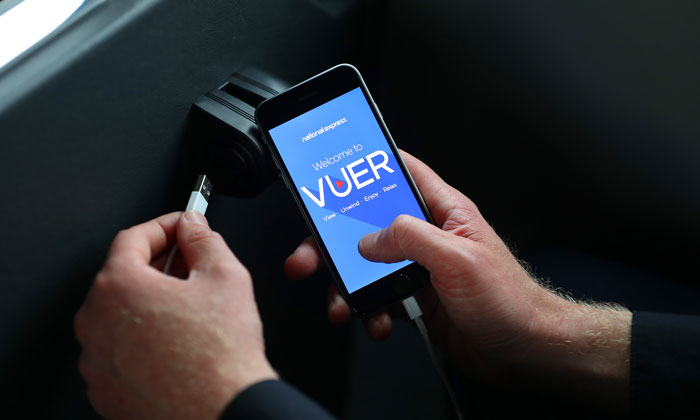Transport operators and 5G: Is it all the ticket?
- Like
- Digg
- Del
- Tumblr
- VKontakte
- Buffer
- Love This
- Odnoklassniki
- Meneame
- Blogger
- Amazon
- Yahoo Mail
- Gmail
- AOL
- Newsvine
- HackerNews
- Evernote
- MySpace
- Mail.ru
- Viadeo
- Line
- Comments
- Yummly
- SMS
- Viber
- Telegram
- Subscribe
- Skype
- Facebook Messenger
- Kakao
- LiveJournal
- Yammer
- Edgar
- Fintel
- Mix
- Instapaper
- Copy Link
Posted: 24 July 2017 | Roger Matthews, Managing Director of GoMedia | No comments yet
GoMedia’s managing director Roger Matthews talks to Intelligent Transport about the prospect of 5G technology and how it may not necessarily be the answer for transport operators.


It doesn’t seem too long ago that 4G technology was made available to the masses, however in many parts of the world it still hasn’t been installed. Despite this, talk of the fifth wave of the wireless technology evolution is already upon us and here at GoMedia we are not entirely convinced it is the solution it promises to be where transport operators are concerned.
5G is in the early developmental stages and there is currently a very limited way of defining it, as no standards or specifications have been put in place. A 5G-connected world promises significantly faster speeds than 4G, to have rapid response times and the ability to run on billions of machines and devices, as well as being more energy efficient.
But is 5G the answer? Or should transport operators be focusing their attention on providing reliable Wi-Fi infrastructures on board their vehicles?
Coverage
As with 4G and existing technology, 5G coverage would be far better in built-up areas rather than rural environments. In what is a typical 4G experience, your train leaves the city where connectivity is good (albeit restricted by tunnels and high buildings from time-to-time) and you are able to benefit from a good service – browsing social media and possibly even streaming videos with few problems. As you leave the city behind, the connection becomes less reliable, dipping in and out of coverage. There is no evidence that 5G technology would be any different and it would cost even more to extend the signal to more rural parts.
Vehicles equipped with on-board Wi-Fi have a huge advantage over those without. Even when the wireless coverage has disappeared, passengers are able to enjoy a wide range of great services such as video, audio, shopping, passenger information, digital magazines, newspapers and books. This way, operators will ensure their customers are happy and, due to content being downloaded to on-board servers, able to benefit from on-board entertainment services even during a signal not-spot – something they wouldn’t be able to do on the 5G network.
As with 4G, where signal is affected by trees, buildings and adverse weather, 5G will have its limitations when it comes to coverage. More advanced technology will be required to aid boosting signals, including enhanced antennas and radio wave bandwidth.
Costs
There is no denying that 5G will be extremely expensive – not only for the networks to implement and roll out, but also for the end user. Due to the fact that the technology is still in development, there are no concrete facts or figures related to costs; however, given that 5G requires many, many more transmitters (base stations) to be installed for it to work, we are already looking at an extortionate figure just to make it accessible.
Individual users will be reluctant to use 5G – as they currently are with 4G – in order to avoid eating up their personal data plans. Therefore, transport operators should be aware of the need for passengers to remain connected on-board without having to dip into their data plans. By installing Wi-Fi infrastructures across their vehicle networks, operators can expect more satisfied passengers – who, in turn, will benefit from a more productive and enjoyable journey.
Limitations
A large proportion of passengers use additional devices as well as smartphones, including iPads, tablets and laptops. Current mobile technology is not compatible with many of these devices; so, unless 5G can operate across multiple devices and machines, this represents a significant limitation as fewer users can benefit from the technology.
For transport operators with Wi-Fi services on-board, passengers using 3G/LTE/5G connectivity rather than the on-board service, represent two problems. Firstly, it takes away bandwidth which is otherwise used by the transport unit’s Wi-Fi service for backhaul. Secondly, they are not within a transport operator’s own digital environment and are therefore a lost opportunity for ancillary revenue opportunities and satisfaction statistics.
Finally…
Whilst 5G technology will undoubtedly be impressive when it is eventually implemented, there are areas that require careful consideration from the transport industry. Installing Wi-Fi networks with infotainment offers a proven solution to on-board connectivity and, given the desire for instantaneous results, can benefit passengers now rather than in the distant future.
Related topics
Business Models, Fleet Management & Maintenance, Multimodality, Passenger Experience, Ticketing & Payments, Transport Governance & Policy
Related organisations
GoMedia








